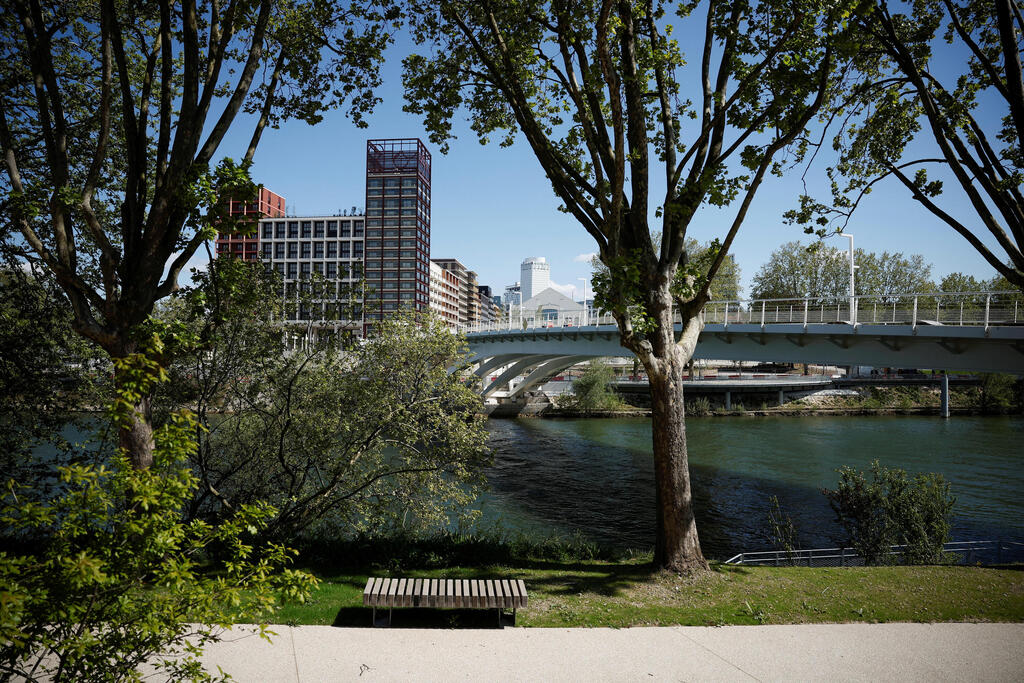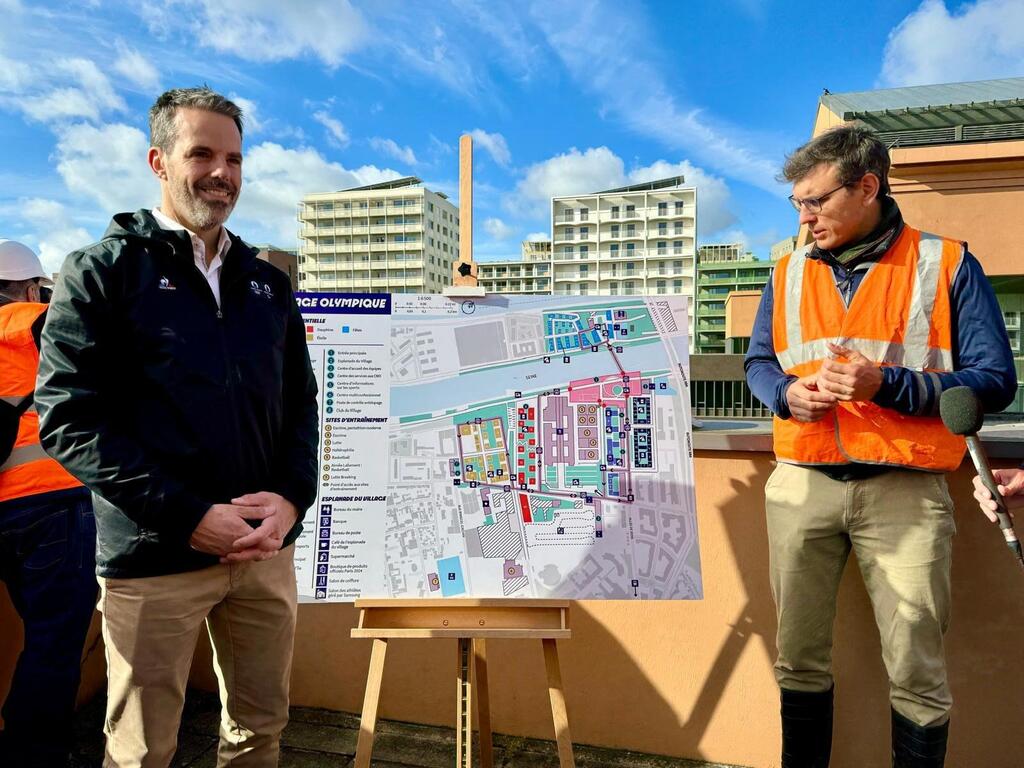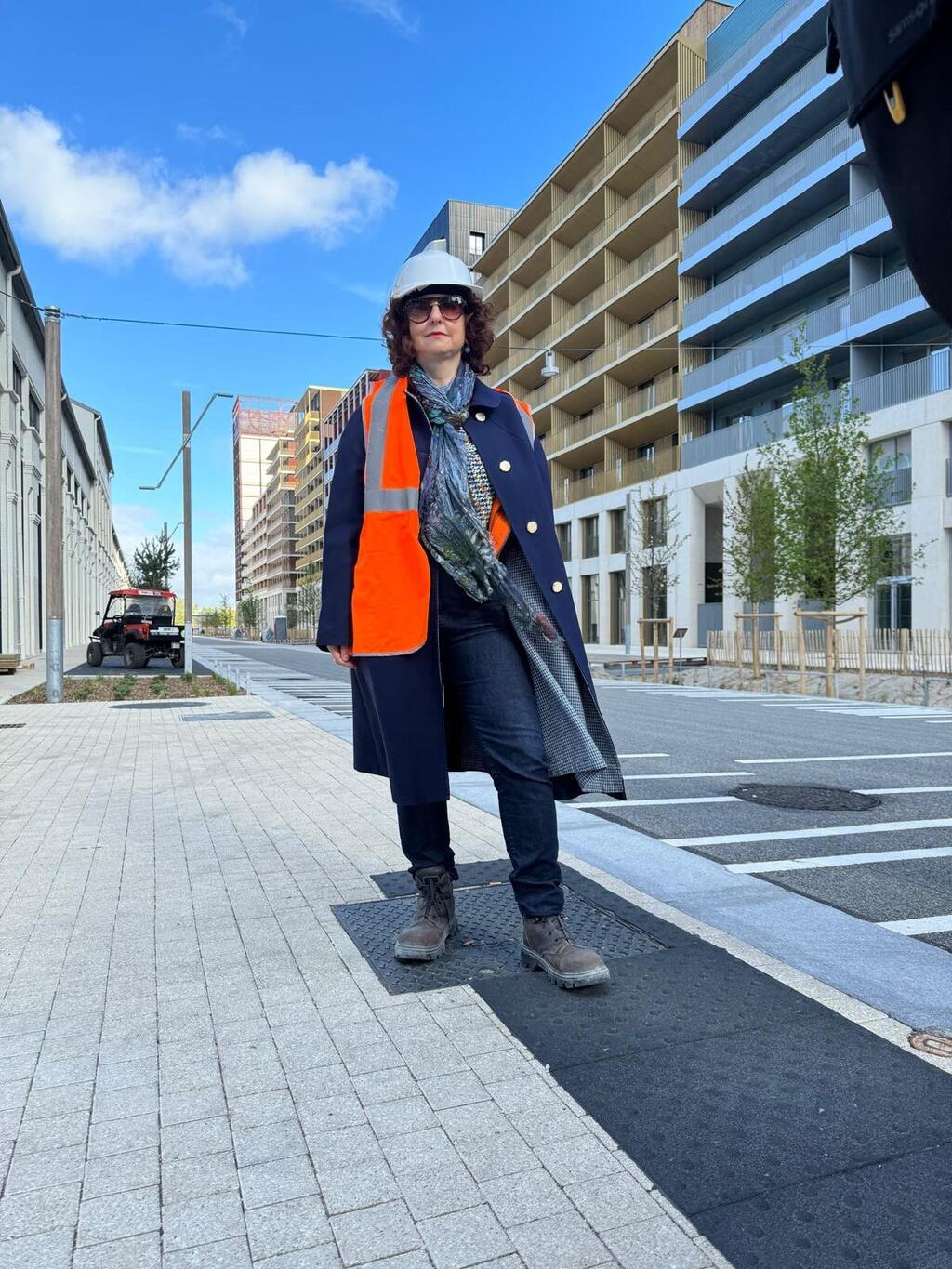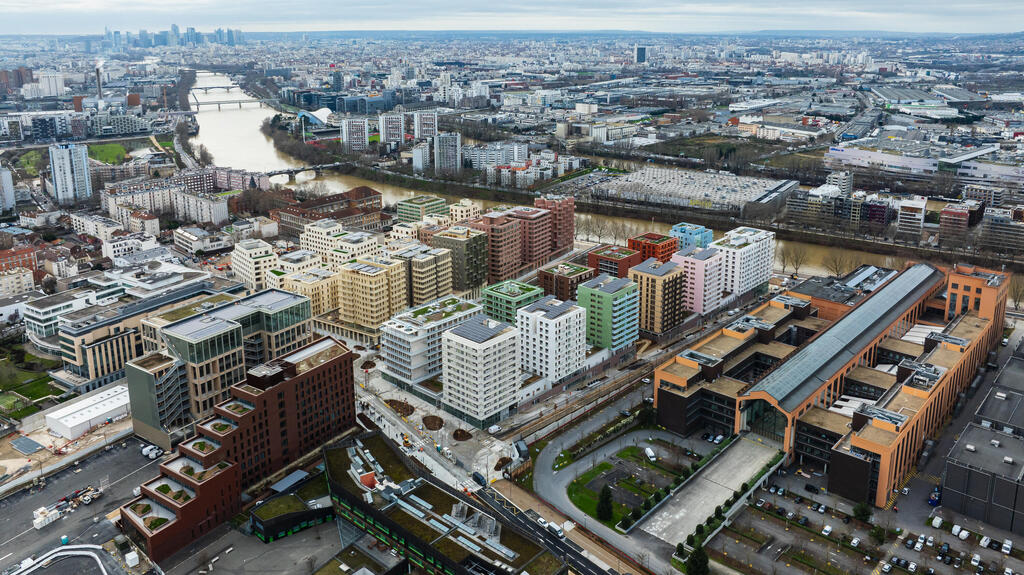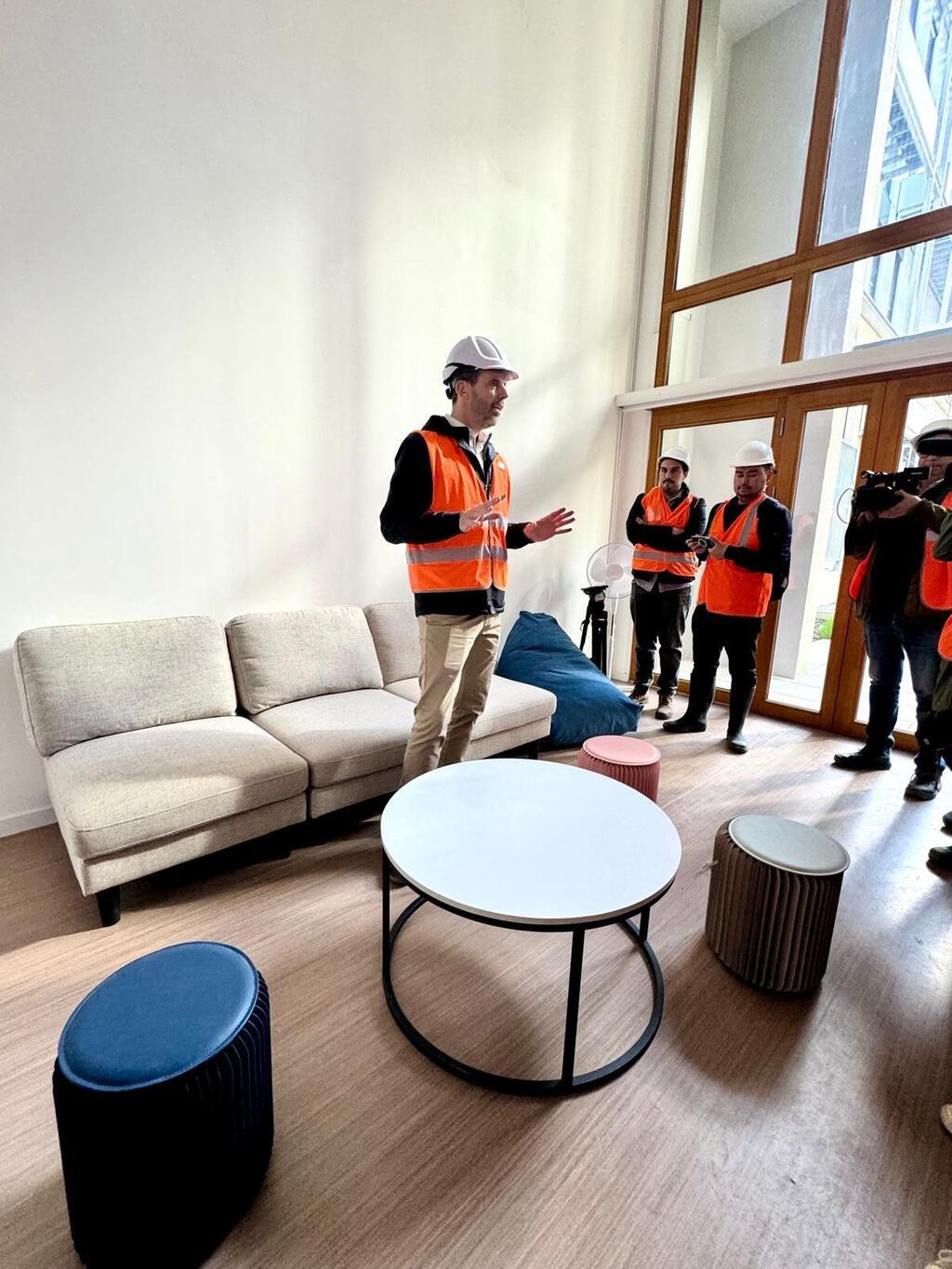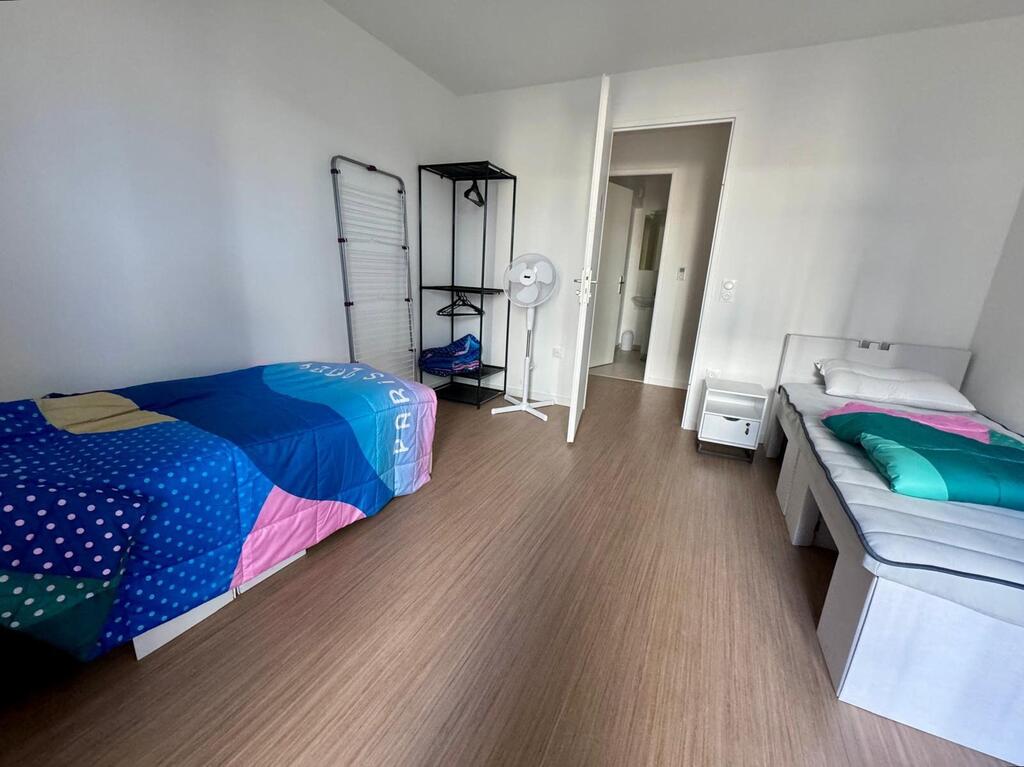French aesthetics and attention to small details produced an ecological marvel north of Paris that will host the most exciting sports event of the year. The Olympic Games will kick off on July 26 and the picturesque compound will turn into the most secure place in Europe of summer 2024.
The Olympic Village, located about six miles from the French capital, was built on Saint-Ouen, and Saint-Denis which suffer from a poor reputation. The giant infrastructure project is supposed to breathe new life into the most densely populated suburb around Paris, and like many previous examples, urban renewal and public transportation development will make it more attractive.
It took the French three years to plan the Olympic Village and another three years to build it, with about 4,000 workers taking part in construction. The construction cost 2.2 billion euros, with only a three percent budget deficit. After passing at least three security checks at the entrance, we were equipped with white helmets, glowing vests and standard boots and set out to wander around the various buildings, which will be surrounded by a three-meter-high wall that will secure 14,250 athletes and 9,250 staff members.
The village was built considering the distance between the medical center and the residential buildings. The planners did not want the athletes to lose their vital energy in the summer sun. The athletes will have bicycles and golf carts to move around the village. The Paralympic athletes will enjoy a special facility that will facilitate wheelchair mobility around the premises.
Olympic Village now, public housing later
Unlike tourists who will crowd public transportation modes in the city throughout the summer, no less than 140 buses per hour will transport athletes to competition venues. After the games, the massive parking lot will be transformed into a park for neighborhood residents.
The streets in the area are wide, but the buildings are very close to each other. A pedestrian and bicycle bridge will connect the main village to the island of Saint-Denis, where 4,000 additional accommodations have been built. After the games, they will be used by the locals.
Except for Barcelona, most Olympic villages have remained empty, awaiting their demolition. The French plan to turn the village into a 21st-century ecological quarter. All 7,200 accommodations will be converted into 6,000 subsidized housing units for students and low-income families, and two schools, an engineering college, and a promenade along the banks of the Seine. It remains unclear how this initiative aligns with affordable housing, as the square meter value in the new neighborhood stands at 7,000 euros.
The proximity of the new buildings to those outside the village is surprising. If not for the giant wall, the neighbors could have waved to the athletes, maybe even shake their hands. The neighborhood's bakery and grocery store currently serve the construction workers residing in the finished buildings.
Dining room in the cinema
The French insist that safety is their top priority. In every Olympics, the delegations are asked where they would feel most comfortable. Some preferences include choosing neighborhoods, but for security reasons, the Israeli team's location is kept undisclosed. Their living quarters will be revealed after the Olympics to curb the ever-present terrorism threat.
One of the important goals for the Olympic organizers is energy conservation and recycling as seen in the construction of the village. Therefore, only accommodations for athletes were built, while existing buildings were designated for public use. The organizers turned the cinematic duplex into a cafeteria that will seat no less than 3,200 people at once and will be open all day long. The studio complex was built by director Luc Besson and was inaugurated in 2012.
Just like the cafeteria, the medical center, the information center, and the vast gym in the Maxwell building were transformed into an Olympics facility. The Maxwell building once housed power turbines for the Paris metro. The building was planned by the architect who planned the French National Library.
A view of the Eiffel Tower
Next, we climbed to the southernmost roof of the village, with a stunning view of the Eiffel Tower and the Sacré-Cœur Basilica, the Seine River, and the old church of the city of Saint-Denis, where the kings of France were once crowned. The organizers told us that one of the building's roofs will have a basketball court overlooking the Eiffel Tower.
Solar panels are installed on the roofs to insulate the buildings and provide alternative renewable energy. Almost every facility has at least two uses. The parasols in the square are also air vents for the ventilation system. This is the most ecological Olympics in history, and that's how the organizers want us to remember the games in Paris.
The highlight of the visit is, of course, the athletes' rooms. There is an Olympic standard that each room is a minimum of 12 square meters, and each room will accommodate two athletes, explains the village's chairman. The smaller apartments can accommodate two to four athletes, and each apartment contains at least one accessible bathroom. In the apartment we visited, we found a cozy living room with a sofa, bean bag chair, tables, and cardboard cabinets.
We were told the furniture was specially designed to support a weight of 120 kilograms, taking into account the bulky French judoka Teddy Riner. The apartment has a room for the delegation manager with a desk, a safe, and a refrigerator. There are no kitchens in the apartments to save space. However, how will the athletes manage to maintain their strict diet without a kitchen?
No jumping on the bed!
The organizers told me that all the walls are movable so after the Games, kitchens can be installed in them. The furniture is made in the colors of the French flag, but the designers decided that pink would replace red because it is a combination of red and white. The beds are made of cardboard and are built at a height for wheelchair athletes. So were the electric outlets.
Although it may not sound like it, the beds themselves feel quite sturdy. The cardboard's density can support hundreds of kilograms. Hopefully, unlike the previous Olympics, the athletes won't jump on the beds and destroy them. The mattress is from the same manufacturer from the Tokyo Olympics. The athletes' nutrition and sleep are very important so the organizers planned the village for athletes, by athletes.
The most controversial part of the Olympic Village is the lack of air conditioning in the athletes' rooms. The insulation provided by the walls is supposed to maintain the cooling and heating system that draws water and transfers it under the floor. The temperature difference between the outside and the inside will be about eight degrees less. If the athletes close the shutters during the day, the room will not overheat. The organizers will provide two fans for each room to create optimal airflow, but some delegations have already ordered portable air conditioners.
An ecological test
It's easy to imagine athletes and staff wandering between the beautiful buildings and well-kept gardens, greeting each other in peace at the fitness center, in the giant cinema hall. Will France's ecological aspirations, signed in the 2015 Paris Agreement to mitigate climate damage, justify the expense? We will only know the conclusions long after the games. Meanwhile, we enjoy the immense investment in planning to bring us faster, higher, and greener to the world's biggest sporting event.


